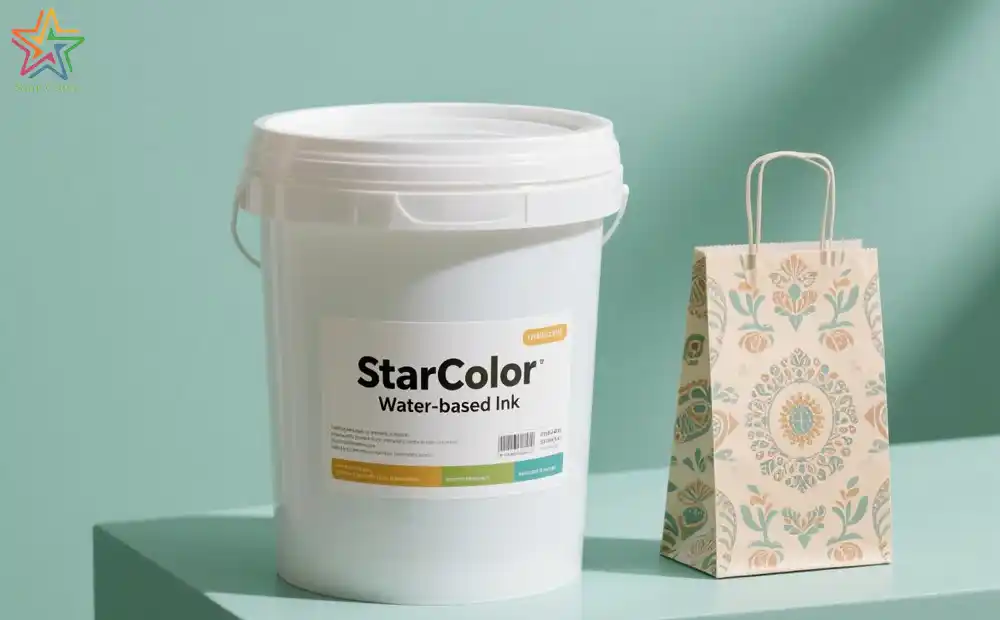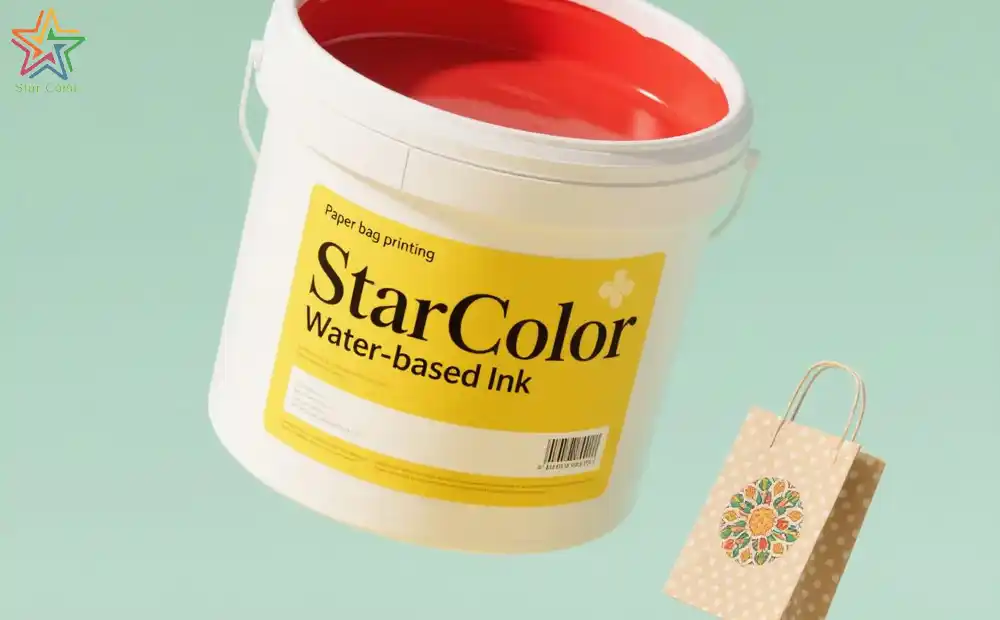6 Challenges in Water-based Ink Printing for Paper Bags
Date: May 16 2025 From: Star Color Views:
Globally, over 400 billion paper bags are consumed annually. With the deepening of the "Plastic Restriction Order," water-based inks have become the mainstream choice for paper bag printing due to their environmental advantages. However, technical challenges such as low drying efficiency (residual moisture > 0.8%), unstable color difference (ΔE > 1.5), and insufficient adhesion (<3B) continue to trouble printing enterprises. These issues can lead to increased rejection rates at best and affect safety and compliance in food packaging at worst.
Based on 2024’s latest production data, the author, with over a decade of experience in the printing industry, analyzes full-process optimization solutions from ink formulation to process parameters. This covers core modules such as drying system upgrades, closed-loop color difference control, and adhesion enhancement technologies, providing measured parameters and equipment selection recommendations to help enterprises break through quality and efficiency bottlenecks.

1. Poor Drying (Residual Moisture > 0.8%)
Core Challenge: Traditional single-stage ovens (60-70°C) cannot balance drying efficiency with paper deformation risks, leading to excessive moisture retention.
Breakthrough Solutions:
- Three-stage gradient temperature control: Stepped heating at 50°C→75°C→95°C, with optimized air duct design to create ±2m/s eddy current differential air supply. Drying efficiency increases by 42%, and moisture residue ≤0.3%.
- Ink system upgrade: Increase solid content from 45-50% to 55-60%, add 0.5% wax powder to adjust surface tension, and use an infrared moisture meter (accuracy ±0.05%) for real-time monitoring. Drying time shortens to 18 seconds.
2. Printing Color Difference (ΔE > 1.5)
Full-process Control:
- Closed-loop viscosity management: Replace traditional Zahn cups with rotational viscometers for ±0.5-second viscosity control, with color density fluctuation ≤0.05.
- Paper pretreatment: Pre-coat papers with Cobb values of 30-50g/m² (3-5g/m² base coat), control dot gain rate ≤12%, and use servo closed-loop pressure control (±0.8N/cm) to ensure ink layer thickness difference ≤0.1μm.
3. Poor Ink Adhesion (<3B)
Multi-dimensional Enhancement Solutions:
- Surface activation: Corona treatment increases Dyne value to ≥42mN/m (power 1.5-2.5kW, speed ≤150m/min), enhancing adhesion to 4B.
- Chemical coupling: Add 0.3-0.5% silane KH-550, pre-disperse at 2000rpm for 30 minutes, achieving 5B adhesion on PET.
- Nano-modification: Incorporate 8% SiO₂ nanoparticles (20nm), ultrasonic dispersion for 15 minutes, improving wear resistance by 300%. Tested via ASTM D3359 cross-cut method and 3M 600 tape test.
4. Paper Fuzzing/Dusting
Precision Parameter Control:
- Material selection: Use ISO 8791-4 certified paper with roughness Ra≤3.5μm and calcium carbonate content ≤18%, or switch to clay-coated paper for improved surface strength.
- Process optimization: Control printing pressure ≤120N/cm, replace with 180 lines/inch anilox rollers, and add 2% leveling agent (BYK-348) as an emergency solution.
5. Ink Bleeding (Bleeding Rate > 15%)
Three-stage Prevention System:
- Paper upgrade: Use high anti-bleeding paper with basis weight ≥80g/m² and sizing degree ≥50s (GB/T 460), reducing bleeding rate by 60%.
- Ink modification: Increase solid content to 55%, add 0.5% colloidal silica for thickening, and increase anilox roller line count by 30% (e.g., 200→300LPI), achieving bleeding rate ≤10%.
- Pressure regulation: Use air-cushion impression cylinders to reduce linear pressure to 80-100N/cm, with real-time monitoring via Techkon SpectroDrive bleeding analysis module.
6. Printing Whiting (Whiting Area > 5%)
Targeted Solutions:
- Condensation whiting: Control workshop humidity at 55%RH±5% with dehumidification systems, achieving 100% whiting elimination.
- Emulsification whiting: Adjust fountain solution pH to 9.0-9.5 with ammonia to restore ink transparency and prevent emulsification.
- Resin precipitation: Preheat ink to 25°C±1°C to improve flowability to level 4 and solve precipitation issues in low-temperature environments.

Through process parameter optimization, equipment upgrades, and material innovation, the above solutions have been validated in multiple printing enterprises, significantly improving production efficiency and product quality. As an industry benchmark, Zhongzhixing Flexo Water-based Ink offers the following core advantages for printing enterprises:
- Extreme printing speed: Compatible with high-speed flexo presses, achieving an industry-leading 450m/min in testing. With three-stage gradient temperature control, drying time shortens to 18 seconds, increasing production efficiency by 42%.
- Stable performance: Scientific formulation with viscosity controlled at 20±5s and pH 8.5-9.0 ensures uniform ink adhesion and clear dots at high speeds, with color density fluctuation ≤0.05 and batch color difference ΔE controllable within 0.7.
- Environmental and safety certifications: FDA food-grade certified, VOC content as low as 1%, compliant with GB 4806.14-2023 food safety national standards. Odorless and non-irritating, suitable for paper bag printing.
- Cost-effectiveness: 40% less material usage than solvent-based inks, saving up to ¥1 million annually in material costs. Solvent-free cleaning reduces maintenance costs by 30%.
Contact us now to get a free sample: eva@starcolor-ink.com
further reading
FDA testing report on flexographic water-based ink for printing paper bags.pdf
 RU
RU
 EN
EN
 CN
CN


